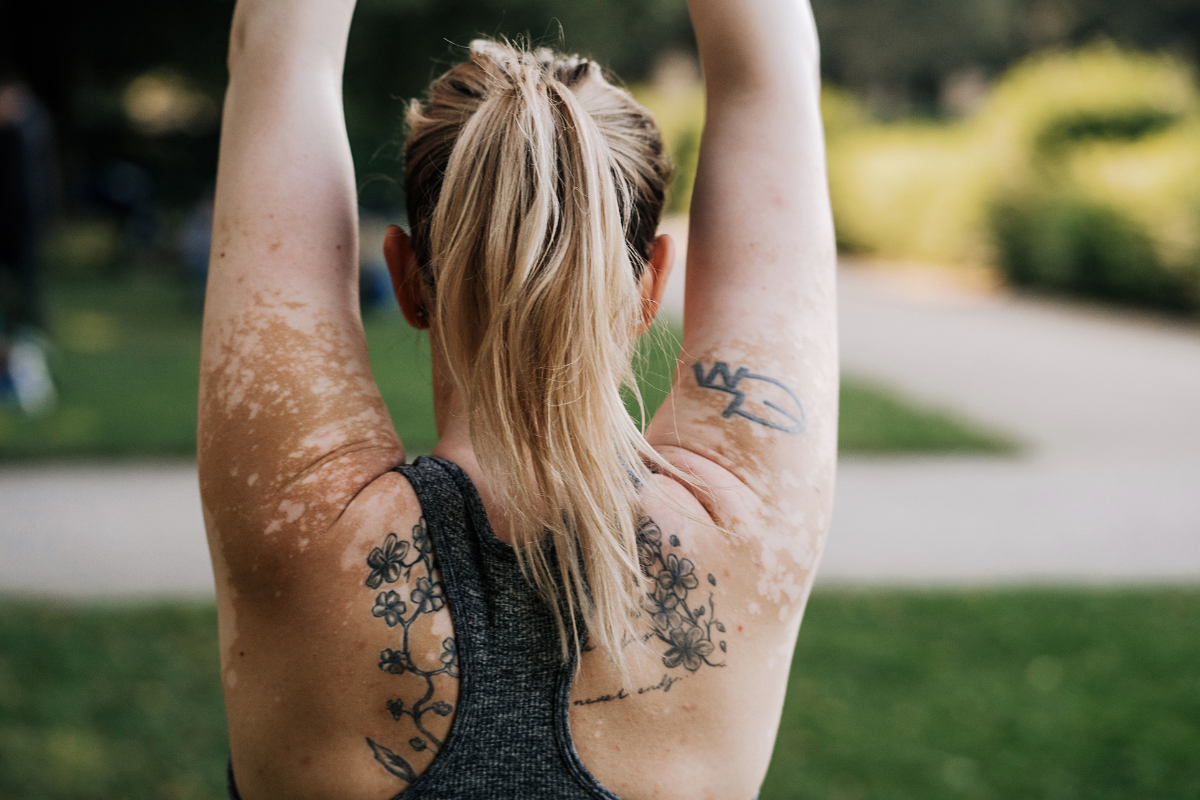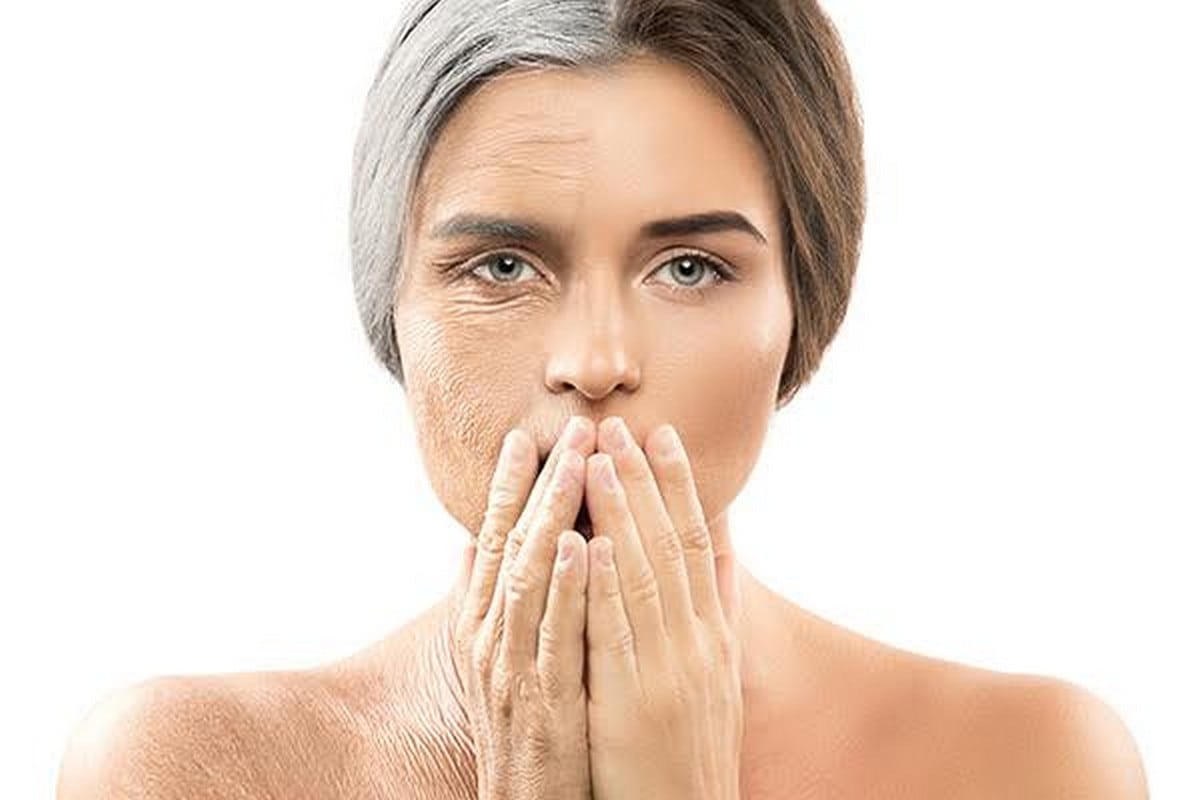Does PABA help people with gray hair & vitiligo?

Many have linked PABA to skin, hair and gut health, others have heard of its beneficial properties on gray hair, while there are still many who don’t know what it is.
So let’s see exactly what this compound is, where it helps and how we can get it!
Table of Contents
What is PABA?
PABA (para-aminobenzoic acid) also known as vitamin B10 is an organic compound that exists naturally in our body, while we can also get it from many foods, as well as from nutritional supplements.
Its actions are very different from those of the B-complex vitamins, although it participates in the synthesis of folic acid (B9), contributes to the better utilization of vitamin B5 and, in general, enhances the assimilation of many necessary components.
PABA deficiency – although the substance is not considered essential for humans – has been associated with the appearance of a variety of symptoms and diseases, such as the following:
- Premature hair graying
- Fatigue
- Irritability
- Poor mood
- Headache
- Vitiligo (local skin discoloration)
Rich sources of PABA are the following:
- Whole grains
- Brewer’s yeast
- Milk
- Meat
- Liver
- Eggs
- Spinach
- Mushrooms
Properties
PABA’s main properties are:
- It shows antioxidant, anti-inflammatory, antispasmodic, antibacterial and antiviral activity.
- It contributes to the creation of red blood cells.
- It acts against constipation and supports a healthy intestinal microflora.
- It promotes normal metabolism & utilization of proteins.
- It supports skin and hair health.
- It provides sun protection.
- It helps us to better utilize vitamin B5.
- It participates in the production of folic acid (B9).
- It enhances the effectiveness of other vitamins.
Although PABA was initially best known for its action as a sunscreen, as it blocks ultraviolet (UV) radiation, this use has been discontinued in recent years due to incidents of skin irritation.
But whether applied topically or taken orally as a dietary supplement, PABA has been associated with a number of beneficial actions, most of which relate to skin, hair, and gut health.
According to studies, PABA may be beneficial in the following health conditions when taken as a supplement:
- Scleroderma
- Peyronie’s disease
- Vitiligo
- Infertility
- Premature hair graying
- Constipation
- Neurodegenerative diseases (e.g. Alzheimer’s disease)
- Connective tissue diseases
- Inflammatory myopathies
- Arthritis
- Hair loss (prevention)
- Headaches
-
PABA for gray hair
Over time, hair begins to lose its color and turn gray and eventually white, which is completely normal and happens in most cases gradually, starting in the 3rd and 4th decade of a person’s life.
Apart from age, however, other factors such as genetic predisposition and lifestyle (diet, smoking, stress) also play an important role in the appearance of gray hair.
According to research results both recent and quite old (1940), it seems that the supplementary intake of PABA – either alone or in combination with calcium pantothenate (B5) – can reverse premature hair graying and also slow down the progression of discoloration due to age.
Positive results have been shown not only from high doses (12-24g per day), but also from smaller doses of 200-500 mg when taken for a respectable period of time (2-10 months). It should be noted that the very large doses were administered for other pathological conditions such as scleroderma, and not with the purpose of hair re-pigmentation.
However, although PABA is still widely used to treat graying hair, the evidence from human studies is clearly insufficient and quite old.
On the other hand, the testimonies of a large part of the people who take it for this purpose are very positive and, thus, the spread of this action continues.
It is worth noting, however, that after one stops taking PABA the hair loses its color once again, while it is recommended to avoid additional intake if the sole purpose is to repigment the gray areas.
-
PABA for vitiligo
Vitiligo is an autoimmune disease in which discoloration is observed in certain parts of the skin, due to the destruction of the melanocytes responsible for skin pigmentation.
The characteristic white patches may be limited to a single spot (localized vitiligo) or found in various areas of the body and/or face (generalized vitiligo). In some cases, even the eyes and mucous membranes (e.g. nose, mouth) are affected.
There are several available ways to treat its symptoms, such as phototherapy and topical application of medicinal substances (corticosteroids). At the same time, however, scientific research is being carried out to determine whether one or more non-medicinal substances (e.g. vitamins) can contribute to the treatment of vitiligo.
There seems to be particular interest in food supplements that contain some of the following ingredients:
- PABA
- L-phenylalanine
- Ginkgo biloba
- Vitamins C, E, B9 (folic acid), B12
- Alpha lipoic acid
- Zinc
Regarding PABA, although the available evidence is extremely limited, it appears that low levels of PABA in the body are likely to be associated with skin discoloration, while supplemental intake may repigment the skin’s white spots and slow the progression of the disease.
For all of the aforementioned ingredients, however, there is insufficient evidence to claim with certainty that there will be any benefit for people with vitiligo. In several cases, re-pigmentation of the skin has been observed, but it was transient.
Dosage
In the various studies that have been carried out, PABA has been used either alone or as part of a formula (e.g. a multivitamin), in doses that vary considerably from case to case.
It is important to note that no Recommended Daily Allowance (RDA) has been set for PABA, but most dietary supplements contain it in concentrations ranging from 50-1000 mg.
The most common dose used to provide both visible benefit and guaranteed safety is 300-500 mg daily. Of course, there are some studies that have used much higher doses of PABA, up to 12 g per day.
When it comes to PABA doses greater than 400 mg per 24 hours are recommended to be taken after consulting a physician.
In general, one could say that a satisfactory daily intake is 300 mg, although in cases such as hair graying, amounts of PABA around 1 gram per day are usually taken.
Finally, it is worth mentioning that there is insufficient data regarding its safety when it comes to children, pregnant and breastfeeding women, and thus its supplementary intake is contraindicated in these cases, as well as by people with severe kidney or liver disease.
In general, PABA appears to help with many health conditions, but there isn’t much high-quality research to support these alleged benefits.
Side effects
Although PABA is generally considered safe, both for oral use (dietary supplements) and for topical application (e.g. as an ingredient in creams), there are many people who experience some unpleasant symptoms because of it, especially in large doses.
In particular, at doses up to 400 mg per day, side effects are rare and usually mild, such as skin rash and loss of appetite.
On the other hand, significantly larger amounts (above 8 grams) are likely to cause – in addition to rashes – fever, gastrointestinal disturbances, low blood sugar, as well as kidney & liver damage.
The various side effects that have been observed from taking PABA are summarized below:
- Skin irritation (rash, sun sensitivity)
- Loss of appetite
- Motion sickness
- Vomiting
- Diarrhea
- Headache
- Fever
- Liver damage
- Kidney damage
- Hypoglycemia
- Vitiligo (skin discoloration)
- Anaphylaxis (very rare)
The above symptoms are reversible, as long as one stops taking it and given of course that the side effects are due to this specific ingredient.
In addition, it is worth noting that PABA interacts with various antibiotics, reducing their effectiveness and, for this reason, it is recommended that they not be taken at the same time.
Furthermore, it is important to emphasize that although it has been used for years as a sunscreen, in some people it has increased the risk of sunburn, while in others it has led to skin discoloration (vitiligo), even though it is widely used as an aid to people with this disease.
So, as we can easily see, PABA is a potentially beneficial ingredient but we still don’t know enough about the optimal dosage & duration of use, which is why it is recommended that it be taken after consultation with a doctor by the following groups of people:
- Children
- People with serious disease
- People on medication
- Women during pregnancy & lactation
Summary
PABA has the potential to benefit a lot of people and all that remains is for further research to be carried out so that we learn all the secrets it may be hiding!
Find at Vita4you.gr PABA supplements.
References:
Disclaimer
The content of this blogspot is not and can not be considered as medical advice, diagnosis or treatment. All information is provided to readers solely for informational purposes. There is no intention to substitute this content for personalized medical advice, diagnosis, prognosis or treatment.





Leave a comment